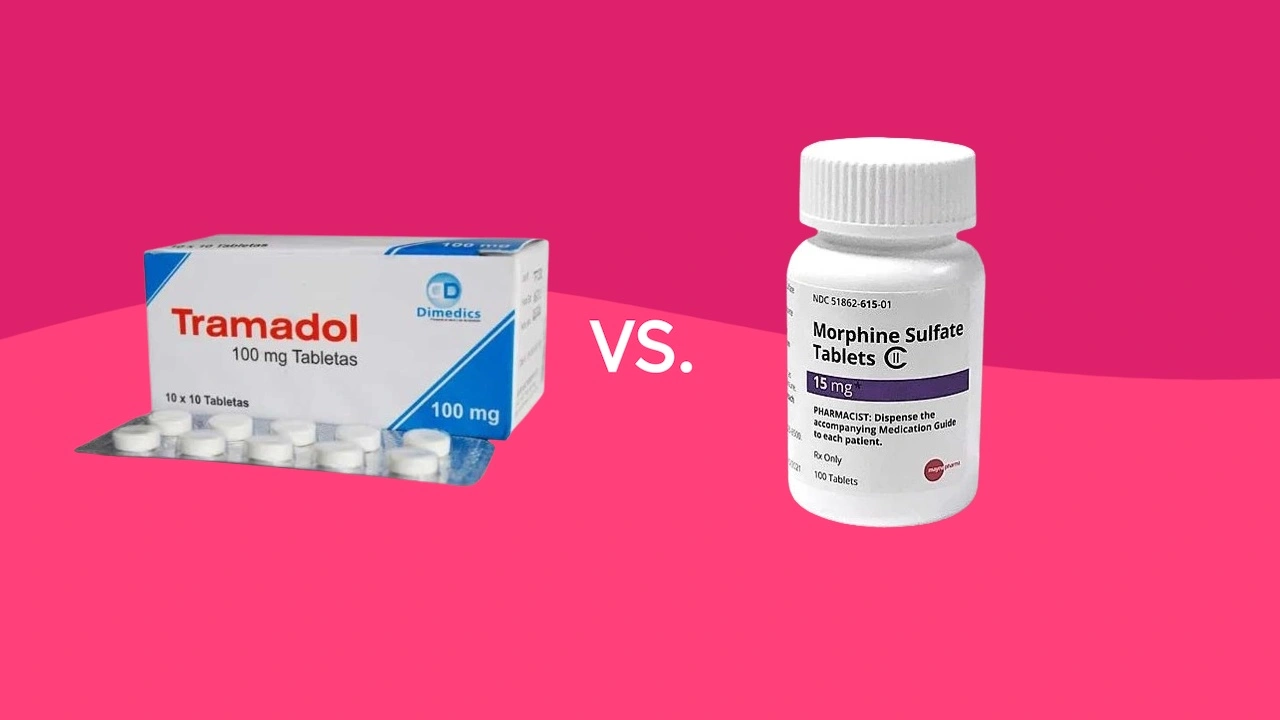Tramadol and morphine, have garnered significant attention for their pain-relieving properties. However, their mechanisms of action, analgesic potency, and potential side effects differ, making a thorough understanding of their comparative effectiveness crucial.
What is Tramadol?
Tramadol is a synthetic opioid analgesic that exhibits a unique mechanism of action. Unlike traditional opioids, tramadol not only binds to opioid receptors but also inhibits the reuptake of neurotransmitters like serotonin and norepinephrine. This dual action contributes to its pain-relieving properties while potentially reducing the risk of some opioid-related side effects.
Morphine: A Potent μ-Opioid Agonist
Morphine, on the other hand, is a naturally occurring opioid analgesic derived from the opium poppy plant. It is a potent μ-opioid agonist, meaning it binds to and activates specific opioid receptors in the brain and spinal cord, effectively reducing the perception of pain.
Clinical Study:
In this section, we will review a clinical study that compared the analgesic effects of tramadol and morphine in patients experiencing moderate to severe pain.
Study Design:
The study was a randomized, double-blind, parallel-group trial approved by the local ethical committee. After obtaining informed consent, a statistically significant number of patients were randomized assigned to either the tramadol group or the morphine group.
Dosing and Administration:
Patients in the tramadol group received oral tramadol at a starting dose of 50 mg, with subsequent doses adjusted based on pain scores and individual response. Similarly, patients in the morphine group received oral morphine, with the initial dose and subsequent adjustments determined by their pain intensity and individual factors.
Pain Assessment:
Pain scores were assessed using a standardized pain rating scale, with scores ranging from 0 (no pain) to 10 (worst possible pain). Pain intensity was evaluated at regular intervals throughout the study.
Results:
The study findings revealed that both morphine and tramadol provided significant pain relief compared to baseline pain scores. However, the morphine group demonstrated a more potent analgesic effect, with a greater reduction in pain intensity scores compared to the tramadol group.
While both groups reported side effects, the incidence and severity of certain side effects, such as respiratory depression and constipation, were higher in the morphine group. The tramadol group, on the other hand, experienced fewer instances of these side effects but had a higher incidence of nausea and dizziness.
Tramadol vs Morphine Comparison:
| Characteristic | Tramadol | Morphine |
| Mechanism of Action | Binds to opioid receptors and inhibits neurotransmitter reuptake | Potent μ-opioid agonist |
| Analgesic Effect | Effective for moderate pain | More potent analgesic effect, effective for severe pain |
| Study Dosing | Oral tramadol, starting at 50 mg of tramadol Pills | Oral morphine, 2 – 10 mg of morphine table. dose adjusted based on pain intensity |
| Pain Relief | Significant reduction in pain scores | Greater reduction in pain intensity scores compared to tramadol |
| Side Effects | Higher incidence of nausea and dizziness | Higher incidence of respiratory depression and constipation |
| Where To Order | Purchase Tramadol Online | Buy Morphine Online |
Discussion:
The results of this clinical study highlight the differences in analgesic potency between tramadol and morphine. While both medications provided significant pain relief, morphine demonstrated a more potent analgesic effect, particularly in cases of severe pain. However, this increased potency also came with a higher risk of certain side effects, such as respiratory depression and constipation.
Tramadol, on the other hand, appeared to be effective for moderate pain levels and exhibited a more favorable side effect profile in terms of respiratory depression and constipation. However, it was associated with a higher incidence of nausea and dizziness compared to morphine.
It is important to note that the choice between morphine vs tramadol should be based on a comprehensive evaluation of the patient’s individual needs, medical history, and potential risk factors. Healthcare professionals must carefully weigh the benefits and risks of each medication, taking into account the severity of pain, potential side effects, and the patient’s overall health status.
Conclusion:
This clinical study provides valuable insights into the comparative efficacy of morphine and tramadol in managing pain. While both medications demonstrated analgesic effects, morphine exhibited a more potent pain-relieving ability, particularly in cases of severe pain. However, this increased potency was accompanied by a higher risk of certain side effects, such as respiratory depression and constipation.
Tramadol, on the other hand, proved effective for moderate pain levels and exhibited a more favorable side effect profile in terms of respiratory depression and constipation, but had a higher incidence of nausea and dizziness.
The choice between these two analgesics should be made carefully, considering the individual patient’s needs, medical history, and potential risk factors. Open communication with patients, adherence to dosage instructions, and regular monitoring are essential for ensuring safe and effective pain management with either tramadol or morphine.

